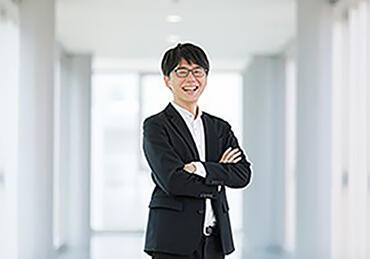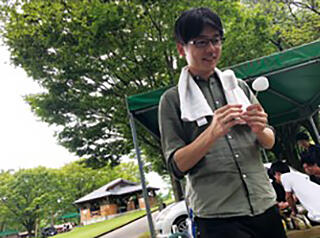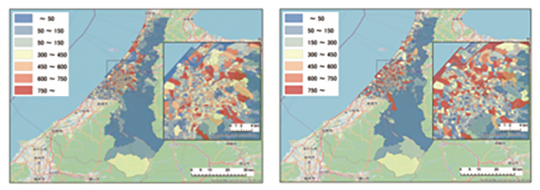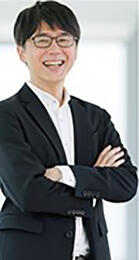
Associate Professor, Institute of Science and Engineering, Kanazawa University

Q1: How did you get into research?
A1: Because of the gap between theory and reality, I went to work and then returned to graduate school again.
I was interested in the development of social infrastructure, so I joined an infrastructure planning laboratory at Tohoku University. However, in the course of my research on cities and geography, I felt the gap between theory and reality. Wanting to gain practical experience, I decided to work for a railway company after completing my master's degree. But while working on my master's thesis, I gained a deeper understanding of my research and found it more enjoyable than before my job search.
I decided during my first three years with the company whether to continue working, or to return to university. Through my work I was able to be involved in interesting projects such as developing new stations and transportation improvements. However, I wanted to consider the shape of the future of the region from a slightly more detached perspective, and ultimately chose to enter the doctoral program.
Q2. What did you specifically research?
A2. I focused on the mathematical structure of "spatial economics", and developed it into a method for policy analysis
A road connecting Metropolis A to Regional City B will, in the short term, stimulate the economy of B. However, if more people start working in A, an industrial agglomeration in A may occur in the long run, i.e., firms withdrawing from B, leading to its decline. Since existing methods for policy analysis have used a short-term perspective framework based on the assumption that this phenomenon does not occur, I wanted to create a methodology that could properly assess long-term growth and risk.
Therefore, I turned my attention to "spatial economics." This field analyzes the formation of a region or city from geographical aspects such as the location of industries and transportation networks. I've found that mathematical structures in other fields, such as structural mechanics, are common to spatial economics. By combining the analytical methods used in these fields, I have developed a framework that is applicable for policy analysis.
However, it is still not easy to explain the actual population distribution of cities. There are major hurdles at each stage, such as converting prefecture-based information into easily usable city-by-city data, creating simulations, and combining models and data. I would like to contribute to regional revitalization by resolving these hurdles and developing a long-term perspective framework for policy analysis.
Q3: What would you like to say to aspiring researchers?
A3. Thinking is a surprisingly difficult act. Challenge yourself to do something interesting
The fact is, I never wanted to be a researcher. As I tried to continue doing what I thought was interesting, I was blessed with good luck and connections, and as a result, I became a researcher. For example, at university, I won a game of rock-paper-scissors and was assigned to a laboratory in the field of infrastructure planning. Although it was not my first choice to be assigned to an individual laboratory, the research I did has led me to where I am today.
The act of thinking is surprisingly difficult. So, while thinking hard about why you find something 'interesting!', try your best to make it happen!
(TEXT: Manami Yokoi)


Profile
Yuki Takayama
Born in Hiroshima prefecture.
Completed a Master's degree at the Graduate School of Information Sciences, Tohoku University, in 2005.
After working for a railway company, he earned a PhD in information science from the Graduate School of Information Sciences, Tohoku University, in 2011.
He was appointed to his current position in 2016 after working as an assistant professor at the Graduate School of Science and Engineering, Ehime University.
FOREST Researcher from 2022.




